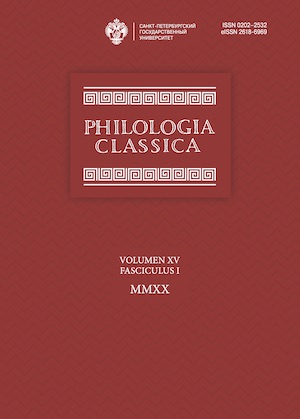Σπήλαιον καλῶσι τὸν τόπον: Justin the Philosopher and the Mithraic Cave
DOI:
https://doi.org/10.21638/spbu20.2020.112Abstract
Justin the Philosopher, a second-century Christian author, discusses the cult of Mithras in his works First Apology on behalf of the Christians and Dialogue with Trypho the Jew. Justin’s portrayal of Mithraic customs is traditionally interpreted in the light of his conception of imitatio diabolica, as the ἀρχή of pagan myths and beliefs. To illustrate the theory of diabolical imitation, Justin touches upon several features of Mithraic rituals and provides us with a few indications of Mithraic ethical teachings. Two curious accounts of Mithraic cave shrines in Justin’s Dialogue with Trypho the Jew (Justin. Dial. 70, 1–3; 78, 6) have not been closely examined by previous researchers and require our special attention. Justin draws a parallel between the Mithraic cave shrines and the prophecy of Isaiah (Isa. 33, 13–16), focusing on the prophet’s words concerning a cave and a cliff as he finds them analogous to Mithraic sanctums. Remarkably, Justin never refers to Mithraic temples as caves, but only as places, called so by Mithraists. He does not claim that the devil has taught Mithraists to perform rituals in caves, but insists that he has taught them to name their sanctuaries caves. Justin’s wording exposes his effort to accentuate the difference between the object (a shrine) and its name (cave). This indicates that Justin believed that Mithraists did not use natural caves as their sanctuaries, despite his knowledge of other aspects of this cult.
Keywords:
cave shrines, mithraea, Mithraism, prophecies, imitatio diabolica, Christian apology
Downloads
References
Downloads
Published
How to Cite
Issue
Section
License
Articles of "Philologia Classica" are open access distributed under the terms of the License Agreement with Saint Petersburg State University, which permits to the authors unrestricted distribution and self-archiving free of charge.






